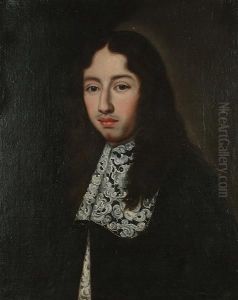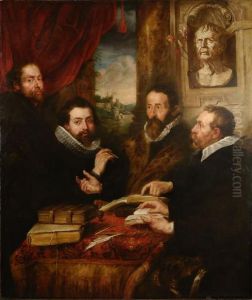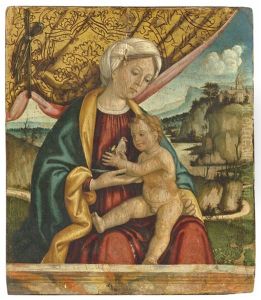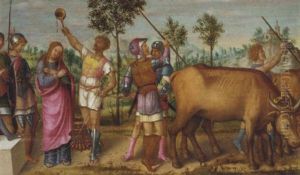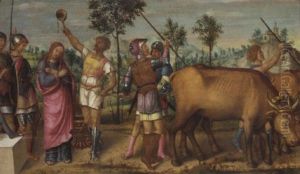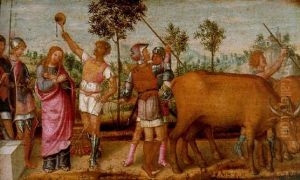Pietro Paolo Agabiti Paintings
Pietro Paolo Agabiti was an Italian painter and draftsman who played a role in the art world during the High Renaissance period, although not as prominent as some of his contemporaries like Raphael or Michelangelo. Born in 1470 in Sant'Ippolito, in the Marche region of Italy, Agabiti was exposed to the vibrant artistic scene of the Italian Renaissance from a young age.
Agabiti's work is not as widely recognized today as that of the leading figures of the Renaissance, and much of his life remains shrouded in mystery. However, it is known that he was active in his native region of Marche throughout his career. He was influenced by the works of prominent artists such as Giovanni Santi and Melozzo da Forlì, and it is believed he may have had some interaction with the Venetian school, although there is limited documentation to support extensive connections.
His style was characterized by the use of vivid color and a strong sense of design, often incorporating architectural elements into his compositions. Agabiti's religious paintings, which were his primary focus, showed a command of perspective and a delicate handling of figures. Despite the lack of extensive records of his works, some pieces attributed to him have survived, allowing for a modest assessment of his contribution to the art of his time.
Pietro Paolo Agabiti's death is recorded as being in 1540. While he did not achieve the same level of fame as the era's giants, his work remains a testament to the breadth of talent during the Italian Renaissance, demonstrating the diffusion of its styles and techniques beyond the most famous names. His contributions to the art of the Marche region help to paint a fuller picture of the period's artistic landscape.
